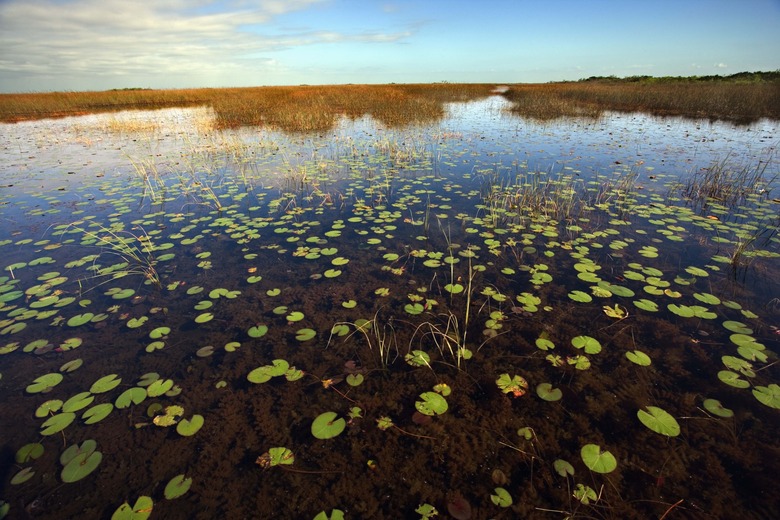Difference Between Water Plants And Land Plants
Although the earliest plants evolved in aquatic environments, over time, unique features developed to allow for life on land beginning about 425 million years ago. The differences between the two environments require different physiological structures and adaptations. For example, the acquisition of the necessary minerals, nutrients and gases varies between water and land, as well as the modes of reproduction, and the effects of gravity. Here are some distinguishing characteristics of water and land plants highlighting how they cope with the demands of their respective environments.
Dealing with desiccation
Dealing with desiccation
Whereas aquatic plants are surrounded by water and can effortlessly absorb it from their environment to obtain one of the three essential ingredients needed for photosynthesis, land plants are required to have ways to both acquire water when it is scarce, transport it to all cells and protect themselves from the threat of evaporation and desiccation. Land plants have, therefore, evolved roots to reach water sources deep in the ground and work as transporting vesicles, as opposed to the holdfasts that some water plants have, which only serve as anchors. In addition, land plants, unlike most water plants, have waxy cuticles covering the tops of their leaves to resist evaporation.
Special features for gas exchange
Special features for gas exchange
Because the availability of carbon dioxide differs so much between aqueous and terrestrial environments, water and land plants have each developed unique features that work well with their respective environments. Water plants, for example, deal with the low availability of carbon dioxide by having special gas chambers to store carbon dioxide for use during times of shortage. Land plants, in contrast, have carbon dioxide readily accessible in the air, but in order to access it, they must open the pores in their leaves without allowing too much water loss. Therefore, they have special pores called stomata that line the underside of the leaves and can close when desiccation is an imminent threat.
Overcoming gravity
Overcoming gravity
On land, unlike in water, plants have to deal with the force of gravity, which makes it more difficult for water to travel up through the stem to reach the leaves, where photosynthesis takes place. To overcome this problem, special transport vessels called xylem are present in land plants, which move the water upwards against gravity by the pulling force of transpiration. Also, land plants contain much more chitin in the cells that make up their stems, supplying enough strength to keep them erect.
Methods of reproduction
Methods of reproduction
Water plants take advantage of their aqueous environment by getting by with simple methods of reproduction. They can either just divide and multiply or they can release sperm and eggs, which float off in the water and form spores that will grow into new plants. Land plants, however, require a protective case for their gametes, and so they have seeds, and rely on various means of fertilization such as birds and insects.
Cite This Article
MLA
Walburg, Mickey. "Difference Between Water Plants And Land Plants" sciencing.com, https://www.sciencing.com/difference-between-water-plants-and-land-plants-13424324/. 21 July 2017.
APA
Walburg, Mickey. (2017, July 21). Difference Between Water Plants And Land Plants. sciencing.com. Retrieved from https://www.sciencing.com/difference-between-water-plants-and-land-plants-13424324/
Chicago
Walburg, Mickey. Difference Between Water Plants And Land Plants last modified August 30, 2022. https://www.sciencing.com/difference-between-water-plants-and-land-plants-13424324/
